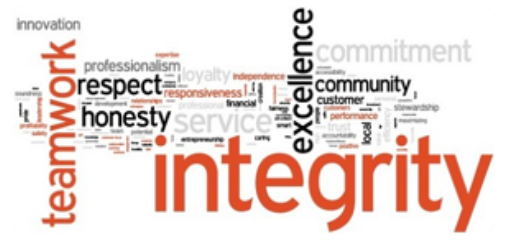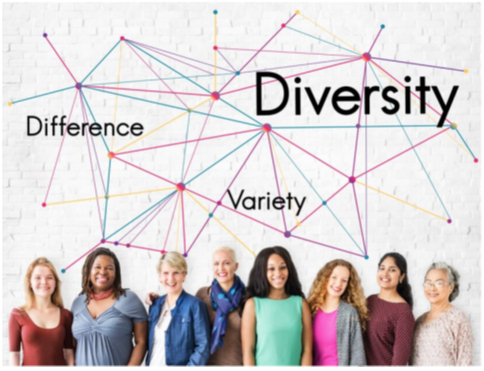 Introduction Introduction
Introduction Click to read Click to read
Intercultural management is a management method that consists of implementing strategies and techniques to manage the differences induced by the cultures of individuals within a professional organization
|
 |
|
| |
|
|
|
Intercultural management is the management of cultural differences within a public or private entity |
|
|
Objectives of a cross cultural management Click to read Click to read
Goal Click to read Click to read
Optimize the results in order to reach the financial and human objectives, in terms of quality and quantity.
Establish a cohesive and efficient team, representative of the company's values |
 |
It is important to take into consideration the diversity on the local level. Opening up and adapting to the international market is sometimes a condition for the survival of the company. |
| |
Summing up Click to read Click to read
| Summing up |
 |
Cross cultural management
It is the management of cultural differences within a public or private entity |
|
|
|
|
 |
Goal
Optimizing financial and human results, transmitting the company's values |
 Communicate Communicate
Be a good listener Click to read Click to read
- Observe and be attentive to all verbal and non-verbal signals emitted by the interlocutors;
- Learn about the societal codes of the employee's country of origin;
- Be informed about the historical, geopolitical and economic context of the countries concerned;
- Respecting and being open-minded, taking into consideration the requests and expectations of employees and anything that is unclear to them. |
 |
| |
|
|
|
Being informed helps to avoid prejudice, facilitates communication with others and their involvement in the company. |
Taking care of your oral and written expression Click to read Click to read
- In order to communicate well, you must be within the reach of the other person;
- You must differentiate between written and oral communication. Writing leaves a trace, formalizes, can be used as proof. It is important, whatever the medium (mail, email, WhatsApp, SMS) to take care of your writing. An oral conversation completes a text and avoids misunderstandings;
- Illustrate what you say with examples, invite your interlocutor to reformulate the main concepts;
- Structure your thoughts and organize your ideas;
- Exploit non-verbal communication, 97% of messages are conveyed through gestures, postures, sounds and silence management. |
 |
| |
|
|
|
Communication is essential to manage good relationships, organize your time and improve the productivity of your company. |
Controlling your emotions Click to read Click to read
- The impact of emotions in communication with others is very important. They can both serve and hinder your communication. Therefore, you must identify your emotions and know how to manage them;
- Filter your emotions, isolate yourself for a few moments, take a step back;
- Using emotional intelligence means knowing how to adapt to a situation. It is also helpful to show empathy with others by controlling and using your emotions to better communicate and share;
- Adopting a positive attitude, evacuating negative thoughts by focusing on the positive, and becoming a magnet for positive waves yourself. Indeed, the positive attracts the positive: we attract what we think about!
|
 |
| |
|
|
|
Communicating well is something you have to work on. Learning to manage your emotions, your reactions and your posture without forgetting to choose your words inspires confidence. |
Summing up Click to read Click to read
| Summing up |
 |
Be a good listener
Being informed avoid prejudices, facilitates communication |
|
 |
To take care of your oral and written expression
It is essential to manage good relationships, time and improve the productivity |
|
 |
Controlling your emotions
Learn to manage your emotions, your reactions and your posture with the words |
 Managing at distance Managing at distance
Establish the rules define the roles Click to read Click to read
-First of all, take into consideration the time zones of everyone;
- If possible, organize meetings by geographical zones,
- Establish rules concerning meetings, dress code, periodicity, content, agenda management;
- Define the roles and responsibilities of each person;
- Plan projects and tasks and assign them to the various participants;
- Set up these different points in consultation with the teams, to take into consideration the particularities, such as public holidays, non-working days. |
 |
| |
|
|
|
Distance is not an obstacle to management, but it is necessary to take into account the specificities of the employees and to set up an adequate organization. |
Use adapted tools Click to read Click to read
- Elaborate and create the different activity and reporting documents, diary, time sheets, activities per project, expenses, marketing documents, business cards, badges;
- Create a common storage space for the data, or use the company's storage space if necessary, with the corresponding authorizations;
- Define common office tools, word processing, spreadsheet, email and other digital tools, project management tools, such as Trello, Slack;
- Set up video conferencing and online document sharing tools, such as zoom, Microsoft teams, Google meet. |
 |
| |
|
|
|
There are many tools on the market, the way you use them is important. Above all, it is important to be organized, to produce coherent document templates that can be used by everyone. |
Maintain team spirit Click to read Click to read
- Contacting the employees before their first day to check if they have all the necessary means and to give them confidence;
- Welcoming newcomers and introducing the different team members, providing access to the necessary information on the profiles of the different participants;
- Establish common objectives and put in place the means to achieve them;
- Facilitating relationships and meetings between the different team members to create links and relationships of trust and thus adhere to common values shared with the company. |
 |
| |
|
|
|
Distance is not an obstacle to management, but it is necessary to take into account the specificities of the employees and to set up an adequate organization. |
Summing up Click to read Click to read
| Summing up |
 |
Establish the rules define the roles
Integrating and organizing multicultural teams is a real challenge |
|
 |
Use adapted tools
Digital transformation does not replace the need to reflect on the uses and methods. |
|
 |
Maintain team spirit
Good understanding and relationship between employees is essential and remains a key factor in the success of the company |
 Motivate Motivate
The multicultural approach Click to read Click to read
- The motivation of an employee is not only financial;
- In Latin countries, the manager is the main agent of motivation through his personality, his passion, his example, his creativity and what he gives of himself;
- The Anglo-Saxon vision, which is quite the opposite, sees the ideal manager as the one who creates the conditions, gives the desire to do and listens, all of which can be learned;
- For the Oriental, wisdom, acquired through experience over time, is the only possible path to a form of ascendancy that is the equivalent of leadership;
- A promotion takes on a different meaning in different countries. When the relationship to power is hierarchical, the only true promotion is also hierarchical. The culture defines the levers that will allow the recognition of each person's efforts at their true value. Recognition also has a symbolic meaning. |
 |
| |
| |
|
|
|
Taking into account the culture of each person, allows to recognize and value the efforts of all. |
Empowerment and trust Click to read Click to read
|
Empowering an employee means recognizing his or her competence and efficiency and aims to make him or her more autonomous;
- This is one of the different motivational levers and increases the manager's power, who implicitly delegates part of his power;
- The manager and the company expect a strong commitment from the employee, which will be controlled and evaluated by measurement elements. He/she must also let his/her employees choose their means of achieving a performance. This also contributes to their professional development;
- Delegating a responsibility is a sign of trust that values the employee and prepares him/her for a possible reward.
The employee can be cited, congratulated and his work shown as an example to the community.
|
 |
| |
|
|
|
Validating objectives is a good thing, but the personal and professional development of employees must also be taken into consideration for the success of the company. |
The key factors of motivation Click to read Click to read
- It is the manager's duty to secure the integration process so that the structure and cultural diversity can merge by creating a climate of trust;
- In all circumstances, you must adopt a positive attitude by talking about points of improvement rather than problems, considering possible solutions and defusing risky situations; |
There are many sources of motivation in the company. They must lead the employee to improve oneself and ensuring a feeling of belonging and a strong involvement in the company. |
- Demonstrating integrity and impartiality will reassure the team and promote cohesion. Sharing information about the company's vision and involving the team in decisions strengthens the bonds and the sense of belonging;
- Teams must be led to make proposals and unite around a common project. Create moments of informal exchange through chats, sharing or video conferences. Plan moments of relaxation and sharing. |
 |
Summing up Click to read Click to read
| Summing up |
 |
The multicultural approach
Recognize the culture of each person is essential "Creating a group is more than the sum of its parts" (Aristotle) |
|
 |
Empowerment and trust
By instilling autonomy and confidence in your employees, you give them the opportunity to shine with their own talents and performance. |
|
 |
The key factors of motivation
Securing, integrating, being impartial, sharing information, federating, exchanging are key factors of motivation to succeed to the team. |
 Having a dual perspective Having a dual perspective
Another approach Click to read Click to read
- In a multicultural environment, the global manager must adopt a double perspective. The first view focuses on the familiar aspects of the situation: achieving objectives, financial, human, in terms of quality or quantity, organizing, deciding and undertaking whenever necessary. It is the source of decision and action;
- The second view, a "meta" view, must embrace the situation in its entirety, from a different angle. It tracks down the unusual, the unusual: "What is going on here?”
-The current practice of intercultural management is impregnated with principles from the Anglo-Saxon world: combativeness, assertion, the valorization of "the hard-fought victory". With the rise of Asia, Far Eastern principles will gradually spread in our organizations: harmony in relationships, respect for the great forces of nature and the time given to things to happen. A Chinese proverb says: "It is useless to pull on the corn shoot to make it grow faster. It may die from it.”
|
 |
| |
This view is different for each person, since the management style depends on the personality, culture and desire of the group to which they belong. |
International team and multiculture Click to read Click to read
- Each individual is the bearer of different cultures, depending on the different social universes or spaces of which he or she is a part: that of his or her country, social category, religious or political references, profession, etc. In the intercultural teams, the following confront each other :
- national (and sometimes regional or socio-ethnic) cultures;
- professional cultures: engineers do not think in the same way as managers or lawyers
- but also corporate cultures.
- In an increasingly global professional environment, people move as easily as goods. A major challenge arises in the face of this significant mobility: facilitating the integration of talent into a company, regardless of its nationality. This is why we speak today of intercultural management as a solution to this challenge.
|
 |
| |
| |
|
|
|
In order to achieve a good team cohesion, the culture and individual values of each member must be taken into consideration. |
Co-constructing the future and optimizing Click to read Click to read
- The world is changing and evolving very fast. New digital communication media, such as Instagram and TikTok, give instant global reach to events.
Multicultural diversity should not be endured but on the contrary be used as a source of wealth for the development of the company.
-An international team is a living laboratory. It saves time and validates the perception of an idea or a product. It reduces risks and costs and avoids marketing mistakes.
It brings an increased creativity, an open mind and a faculty to adapt with a stronger reactivity for the survival and the good health of the company.
- A multicultural team is the reflection of a society in the process of change and globalization. In its structure, it is better able to respond to future market expectations. |
 |
| |
| |
|
|
|
Multiculturalism promotes creativity and innovation. It represents an important competitive advantage for a company and its future prospects. |
Summing up Click to read Click to read
| Summing up |
 |
Another approach
A dual perspective is necessary :
- factual; qualitative and quantitative objectives
- global by showing curiosity.
|
|
 |
International team and multiculture
Intercultural management must take all the cultural aspects of each one into account and share them with the team members. |
|
 |
Co-constructing the future and optimizing
Multicultural diversity is an asset. An international team provides better, faster answers and improves the company's competitiveness. |
 Good pratices Good pratices
The intercultural challenge Click to read Click to read
- An international presence is an undeniable source of wealth, but it also implies meeting certain significant intercultural challenges.
- You must map the different cultures represented in your team and in your company. You must take the time to discover the specificities of these different cultures and discuss them with the people concerned, then harmonize these specificities to set up a common work framework, where everyone can express themselves and be considered. |
 |
| - The role of the manager is to preserve the interests of the company and to seek a consensus on the very different uses of a culture. An example is punctuality during appointments or meetings. Anglo-Saxons are very punctual, while Southern Europeans and Africans are more flexible on this issue.. |
| |
|
|
|
The manager of a multicultural team is obliged to adapt his behavior according to his interlocutors and their cultures. |
Means and methods Click to read Click to read
The means and methods to be put in place are decisive in order to manage the teams and promote the successful completion of projects. Thus it is necessary to :
|
A consensus must be reached on the means necessary for the proper functioning of the team to achieve objectives and results. Modern methods are agile and adapt to changing situations. |
- Take the time to clearly define the individual and collective qualitative and quantitative objectives;
- Set the framework of the work and then record it in a document that is accessible to everyone at all times;
- Determine the scope of work and distribute the work according to skills;
|
 |
- Coordinate the different tasks, establish a schedule to reach a common goal;
- Share a roadmap and define the intermediate steps to reach it;
- Set up collaborative tools, translation software, promote good work organization and team spirit;
- Communicate, establish the frequency of meetings, share common working documents by involving everyone in the preparation of the meeting;
- Manage the individual as well as the collective.
|
| |
|
|
|
The human dimension Click to read Click to read
| - A company is first and foremost a matter of men and women who share common objectives and values. The manager must have a minimum of information about each person and their culture, in order to adapt his or her dialogue on a case-by-case basis; |
The human element is at the heart of a company project, even more so in an international and multicultural context. |
|
- The commitment of employees must be recognized and rewarded according to established rules that are valid for all. It is important to establish small rituals: coffee break, aperitif, common meal, which allow to reinforce team cohesion. These practices can be applied in an original way from a distance;
|
 |
| - By providing regular feedback on figures, results and progress, your team will be more involved and united. Celebrating successes and project completion after a period of intense work maintains the motivation and commitment of the teams. Self-evaluation is a way to empower employees. Sometimes, external contributors, coaches, mediators, etc. help integration and development and facilitate social dialogue. |
| |
|
|
|
Summing up Click to read Click to read
| Summing up |
 |
The intercultural challenge
Setting up a common work environment that is favourable to all is one of the keys to the Manager's success. |
|
 |
Means and methods
They are used to manage teams and carry out projects.
In his objectives, the manager must take into account the individual and the group |
|
 |
The human dimension
It is necessary to take into account the development of women and men in a company project. The manager must involve and reward the staff by establishing rituals and moments of conviviality. |
|
 Cross Cultural Management
Cross Cultural Management


 Introduction
Introduction Click to read
Click to read 

 Communication
Communication















